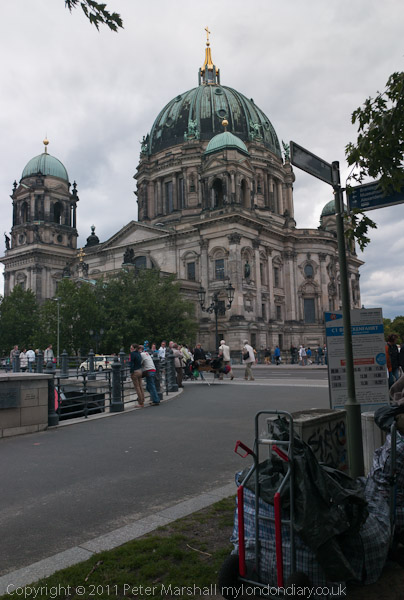
After paying our respects to Marx and Engels we headed for a church. There was a large one just across the river, the Berlin Cathedral Church – Berliner Dom, but we spurned that in favour of the Protestant Evangelical St. Marienkirche further north on Karl-Liebknecht-Str. Although it dates back in part 700 years, and is one of the two oldest churchis in Berlin there was extensive rebuilding in the nineteenth century. It was also very badly damaged in the war, and was rebuilt by the East German authorities in the 1950s.
My pictures give an impression of the interior, but don’t show the main reason it is worth visiting, for its art collection, which includes the 22m long 22m long ‘Totentanz’ (Dance of Death) medieval wall painting from around 1420.
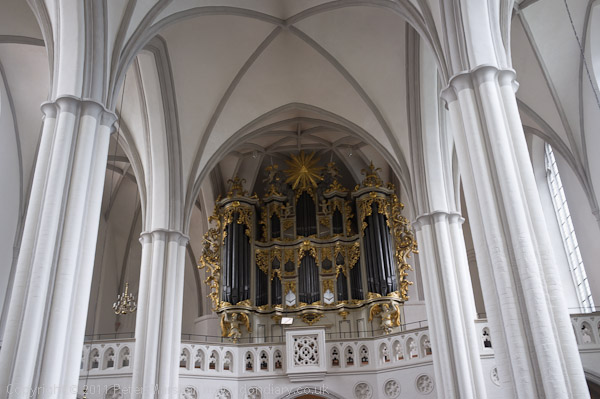
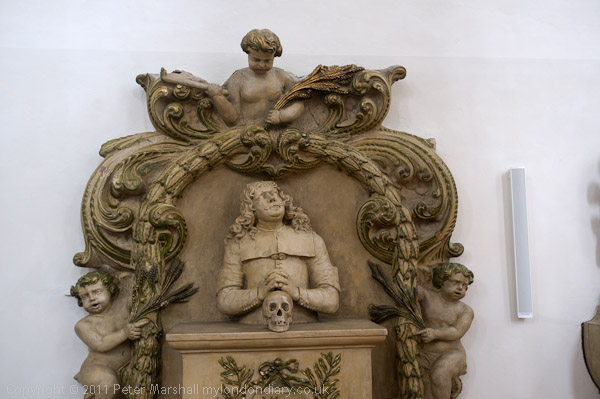
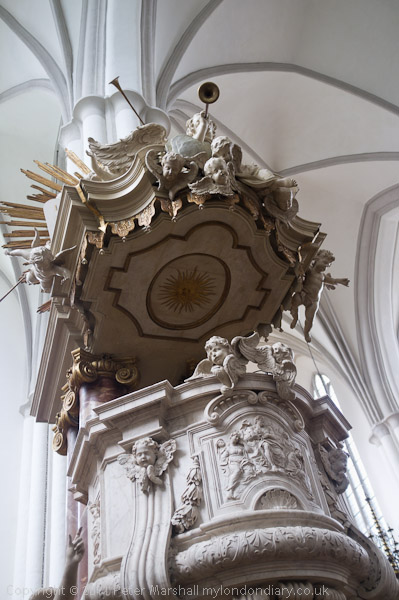
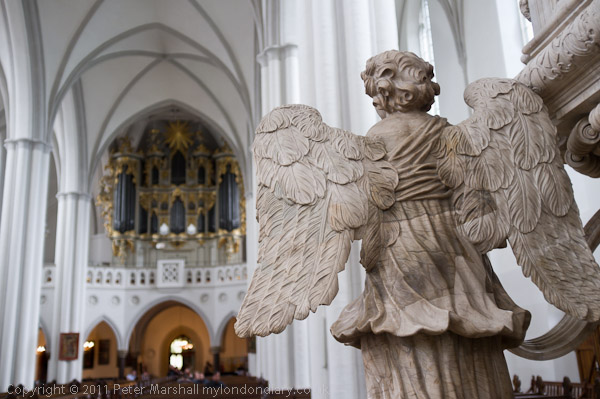
Close to the church is the Neptunbrunnen fountain with the Roman God in the middle and 4 women depicting the 4 main rivers of Prussia around the edge of the pool; behind it you can see the imposing town hall from 1869, the Rotes Rathaus.
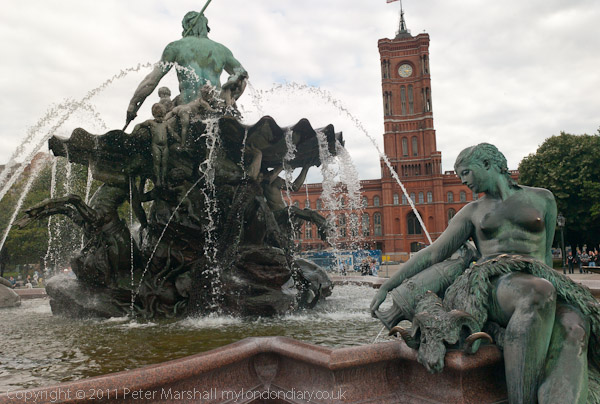
The bronze Bronze ‘ Die Allegorie der Wissenschaft ‘ (The Allegory of Science), a man holding an open book and a globe by Albert Wolff is in front of the Nikolaikirche. It was one of the statues around his 1871 monument to King Friedrich Wilhelm III. The king was melted down as a part of the war effort in 1944, but this and another of the figures from around it survive in the church garden.
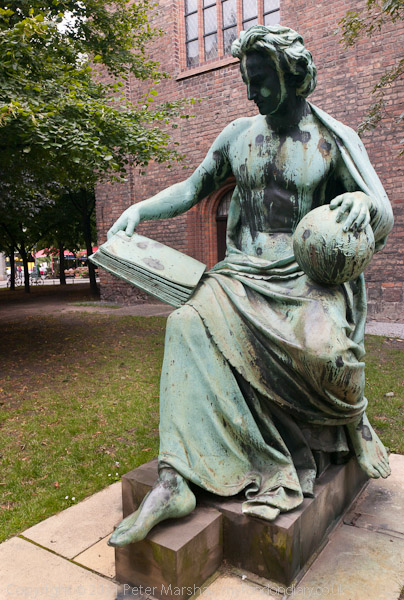

Ephraim-Palais museum in Poststrasse; we admired its steps and elegant facade but didn’t go in. Originally built in 1766, it was destroyed by the Nazis in 1936, but many of the sculptures and details were kept in store, and the building was reconstructed by East Germany in 1985.
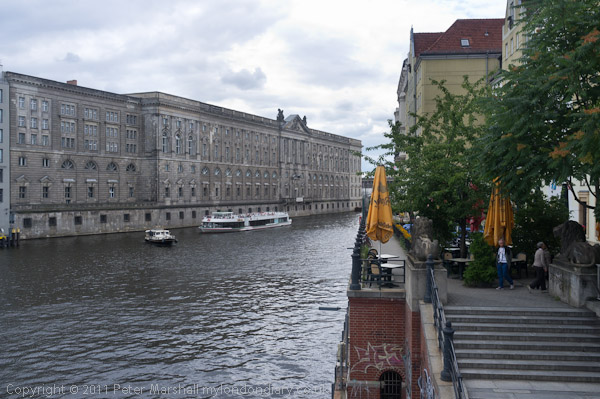
Looking north along the Spree.
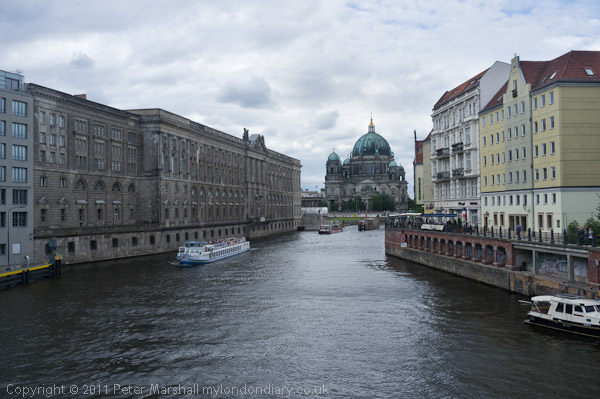
Further across the bridge we could see Berlin Cathedral.
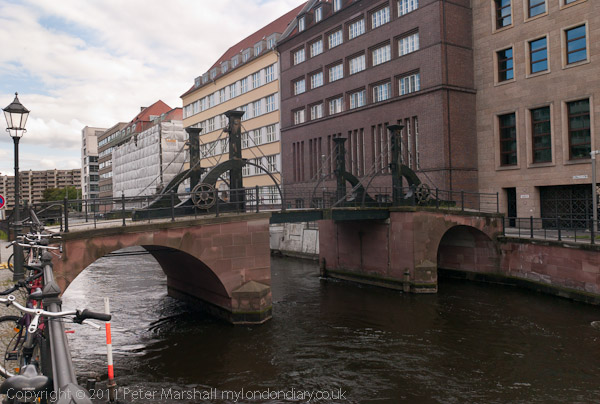
The Jungfernbrücke (Maidens bridge) on Friedrichsgracht. A wooden drawbridge was first built here across the Spree Canal (furthr north called the Kupfergraben) around 1688-9 and was replaced by a wood and iron bridge similar to the current bridge in 1798. There were once nine bridges like this. The canal was widened and the bridge extended in 1939, and has undergone several renovations in 1954, 1967 and 1979. The oldest bridge in Berlin, the origin of its name is uncertain, but possibly refers to a nearby shop run by two French women.
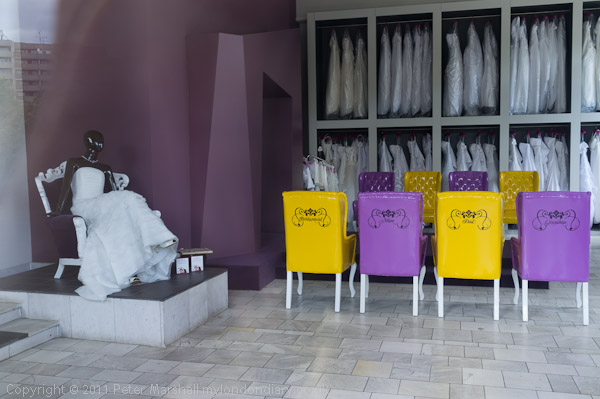
We wandered around a bit, looking at buildings and shop windows, including this one for wedding dresses.
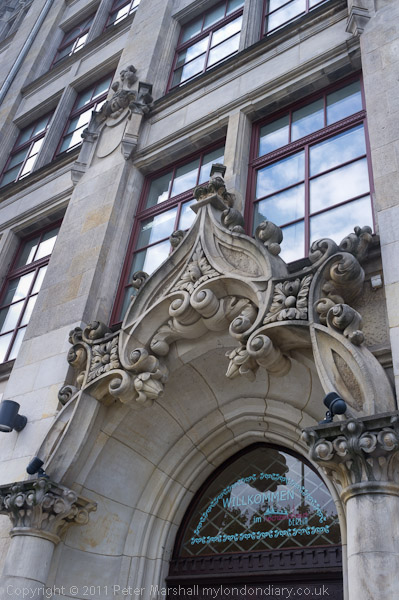
A fine building on the corner by the old bridge on Gertraudenstrasse, the Jewel House built in 1896-8 at huge expense for the gold merchant Wilhelm Müller. It has also over the years housed a clothing store, a music publisher, the offices of the German Gymnastics and Sports Federation and many other things including a wedding shop, still present on the ground floor. The building was extensively renovated in 2002. I took several pictures in the area but will spare you the rest. A bridge is supposed to have existed here since the 13th century but only got its present name after the hospital and the chapel of Saint Gertrude was built next to it in the 15th century. In 1739 it was replaced by a wooden lifting bridge which in turn was replace by the current stone Gertraudenbrücke in 1896. There is now an adjacent modern rather plain steel bridge which carries the traffic and the old one is a historical monument.
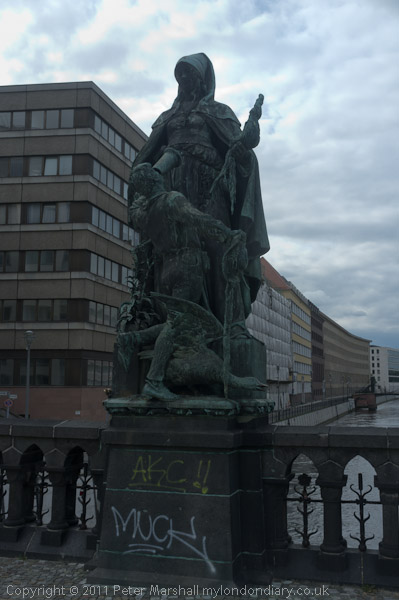
This statue by Rudolf Siemering (1896) at the centre of the old Gertraudenbrücke shows St Gertrude. There are at least two St Gertrudes who are often confused. St Gerturde the Great, (1256-1302) was a German Benedictine nun, mystic, and theologian who wrote many books and was an early devotee of the Sacred Heart of Jesus. and is often thought to be the subejct of this sculpture. But it was St Gertrude of of Nivelles, a 7th century Belgian abbess who was venerated as a protector against mice and rats at the time of the Black Death in the 15th century (she was said to have banished them with a prayer), and those at the base of the statue have been rubbed shiny by people touching for protection and good luck. Long a patron saint of travellers she has in recent years also been adopted at the patron saint of cats. The bridge got its name form a nearby convent of St Gerturde, though I don’t know which one.
The statue was saved from being melted down in the Second World War as it was hidden by the brass founder, but it disappeared mysteriously in 2017 according to newspaper reports, but was officially taken away for the restoration of the bridge. It had not been replaced by June 2018.
Our walks around Berlin continue in later posts.
Previous Berlin post
______________________________________________________
There are no adverts on this site and it receives no sponsorship, and I like to keep it that way. But it does take a considerable amount of my time and thought, and if you enjoy reading it, a small donation – perhaps the cost of a beer – would be appreciated.
My London Diary : London Photos : Hull : River Lea/Lee Valley : London’s Industrial Heritage
All photographs on this and my other sites, unless otherwise stated, are taken by and copyright of Peter Marshall, and are available for reproduction or can be bought as prints.
To order prints or reproduce images
________________________________________________________